
In Old Chicago is a 1938 American disaster musical drama film directed by Henry King. The screenplay by Sonya Levien and Lamar Trotti was based on the Niven Busch story, "We the O'Learys". The film is a fictionalized account about the Great Chicago Fire of 1871 and stars Alice Brady as Mrs. O'Leary, the owner of the cow which started the fire, and Tyrone Power and Don Ameche as her sons. It also stars Alice Faye and Andy Devine. At the time of its release, it was one of the most expensive movies ever made.

Sir David Lean was an English film director, producer, screenwriter, and editor, widely considered one of the most important figures of British cinema. He directed the large-scale epics The Bridge on the River Kwai (1957), Lawrence of Arabia (1962), Doctor Zhivago (1965), Ryan's Daughter (1970), and A Passage to India (1984). He also directed the film adaptations of Charles Dickens novels Great Expectations (1946) and Oliver Twist (1948), as well as the romantic drama Brief Encounter (1945).

Robert Charles Durman Mitchum was an American actor. He is known for his antihero roles and film noir appearances. He received nominations for an Academy Award and a BAFTA Award. He received a star on the Hollywood Walk of Fame in 1984 and the Golden Globe Cecil B. DeMille Award in 1992. Mitchum is rated number 23 on the American Film Institute's list of the greatest male stars of classic American cinema.

Doctor Zhivago is a 1965 epic historical romance film directed by David Lean with a screenplay by Robert Bolt, based on the 1957 novel by Boris Pasternak. The story is set in Russia during World War I and the Russian Civil War. The film stars Omar Sharif in the title role as Yuri Zhivago, a married physician and poet whose life is altered by the Russian Revolution and subsequent civil war, and Julie Christie as his love interest Lara Antipova. Geraldine Chaplin, Tom Courtenay, Rod Steiger, Alec Guinness, Ralph Richardson, Siobhán McKenna, and Rita Tushingham play supporting roles.
Robert Oxton Bolt was an English playwright and a two-time Oscar-winning screenwriter, known for writing the screenplays for Lawrence of Arabia, Doctor Zhivago, and A Man for All Seasons, the latter two of which won him the Academy Award for Best Adapted Screenplay.

Madame Bovary, originally published as Madame Bovary: Provincial Manners, is a novel by French writer Gustave Flaubert, published in 1857. The eponymous character lives beyond her means in order to escape the banalities and emptiness of provincial life.
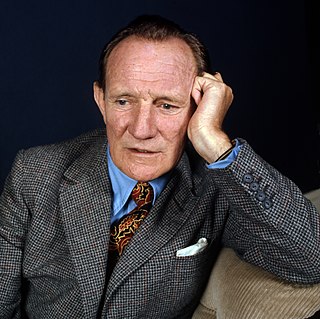
Trevor Wallace Howard-Smith was an English stage, film, and television actor. After varied work in the theatre, he achieved star status with his role in the film Brief Encounter (1945), followed by The Third Man (1949).

Lady Caroline Lamb is a 1972 British epic romantic drama film based on the life of Lady Caroline Lamb, novelist, sometime lover of Lord Byron and wife of politician William Lamb, 2nd Viscount Melbourne. The only film written and directed by Robert Bolt, it starred his wife, Sarah Miles, as Lady Caroline, Jon Finch, Richard Chamberlain, Laurence Olivier, Ralph Richardson, John Mills, Margaret Leighton and Michael Wilding.
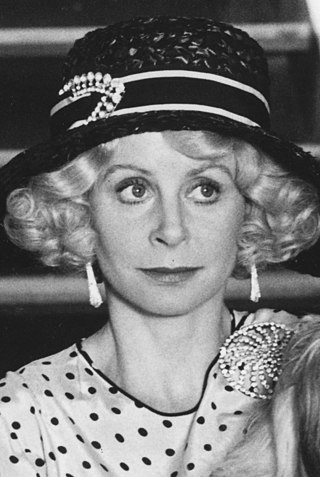
Sarah Miles is a retired English actress. She is known for her roles in films The Servant (1963), Blowup (1966), Ryan's Daughter (1970), The Man Who Loved Cat Dancing (1973), White Mischief (1987) and Hope and Glory (1987). For her performance in Ryan's Daughter, Miles received a nomination for the Academy Award for Best Actress.

Jean Merilyn Simmons was a British actress and singer. One of J. Arthur Rank's "well-spoken young starlets," she appeared predominantly in films, beginning with those made in Britain during and after the Second World War, followed mainly by Hollywood films from 1950 onwards.
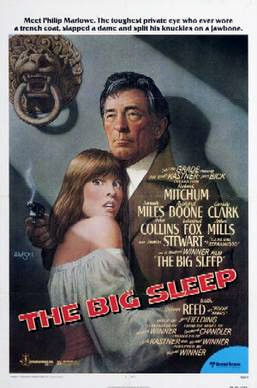
The Big Sleep is a 1978 neo-noir film, the second film version of Raymond Chandler's 1939 novel of the same name. The picture was directed by Michael Winner and stars Robert Mitchum in his second film portrayal of the detective Philip Marlowe. The cast includes Sarah Miles, Candy Clark, Joan Collins and Oliver Reed, and features James Stewart as General Sternwood.
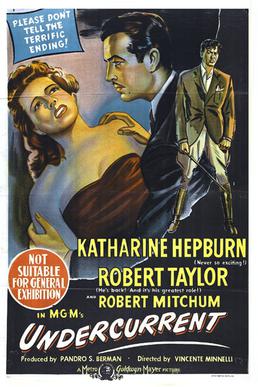
Undercurrent is a 1946 American film noir drama directed by Vincente Minnelli and starring Katharine Hepburn, Robert Taylor, and Robert Mitchum. The screenplay was written by Edward Chodorov, based on the story "You Were There'" by Thelma Strabel, and allegedly contained uncredited contributions from Marguerite Roberts.
Jack Martin Smith was a highly successful Hollywood art director with over 130 films to his credit and nine Academy Award nominations which ultimately yielded three Oscars.

William Frank Jones, known professionally as Christopher Jones, was an American actor. He was best known for his starring roles in the films Wild in the Streets (1968) and Ryan's Daughter (1970), and for playing the title role in the 1960s television series The Legend of Jesse James.
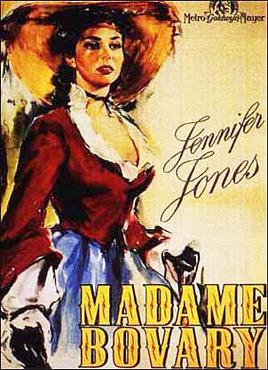
Madame Bovary is a 1949 American romantic drama, a film adaptation of the classic 1857 novel of the same name by Gustave Flaubert. It stars Jennifer Jones, James Mason, Van Heflin, Louis Jourdan, Alf Kjellin, Gene Lockhart, Frank Allenby and Gladys Cooper.
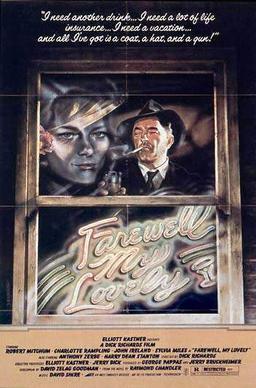
Farewell, My Lovely is a 1975 American neo-noir crime thriller film directed by Dick Richards and featuring Robert Mitchum as private detective Philip Marlowe. The picture is based on Raymond Chandler's novel Farewell, My Lovely (1940), which had previously been adapted for film as Murder, My Sweet in 1944. The supporting cast features Charlotte Rampling, John Ireland, Jack O'Halloran, Sylvia Miles, Harry Dean Stanton and hardcore crime novelist Jim Thompson, in his only acting role, as Charlotte Rampling's character's elderly husband Judge Grayle. Mitchum returned to the role of Marlowe three years later in the 1978 film The Big Sleep, making him the only actor to portray the character more than once in a feature film.
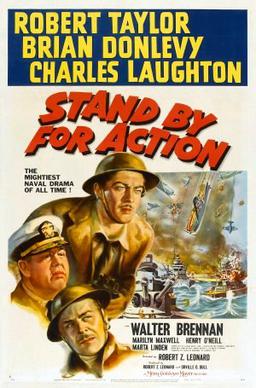
Stand By for Action is a 1942 American black-and-white U.S. Navy war film from MGM, directed by Robert Z. Leonard, and starring Robert Taylor, Brian Donlevy, Charles Laughton, Walter Brennan. Marilyn Maxwell made her film debut in this feature. Suggested by a story by Laurence Kirk, and with an original story by Captain Harvey Haislip and R. C. Sherriff, the film's screenplay was written by George Bruce, John L. Balderston, and Herman J. Mankiewicz.

The Angry Hills is a 1959 American-British war film directed by Robert Aldrich and starring Robert Mitchum, Stanley Baker and Elisabeth Müller. It is based on the novel by Leon Uris.

Robert Mitchum (1917–1997) was an American actor who appeared in over 110 films and television series over the course of his career. He is ranked 23rd on the American Film Institute's list of the 50 greatest American screen legends of all time. His first credited named role was as Quinn in the 1943 western Border Patrol. That same year he appeared in the films Follow the Band, Beyond the Last Frontier, Cry 'Havoc' and Gung Ho! as well as several Hopalong Cassidy films including Colt Comrades, Bar 20, False Colors, and Riders of the Deadline. In 1944, he starred in the western Nevada as Jim "Nevada" Lacy, and a year later in the film West of the Pecos as Pecos Smith. During the 1940s, he was also cast in the film noirs Undercurrent (1946), Crossfire (1947), Out of the Past (1947) and The Big Steal (1949). Mitchum was nominated for the Academy Award for Best Supporting Actor for his role as a world-weary soldier in the 1945 film The Story of G.I. Joe, which received critical acclaim and was a commercial success.
Norman Savage (1930–1973) was an English film editor. He is credited as the principal editor on seven feature films, and as the sound editor on another four. He worked with the director David Lean on four films that spanned Savage's entire career. Lean has been noted as possibly "the best British film director ever", and was himself a masterful editor. Savage started his career as an assistant editor on Lean's Hobson's Choice (1954). Savage was Anne V. Coates' first assistant editor for Lean's Lawrence of Arabia (1962). He was nominated for an Academy Award for Best Film Editing for Lean's 1965 film Doctor Zhivago, and was nominated for the BAFTA Award for Best Editing for Lean's 1970 film Ryan's Daughter. Savage died of leukemia while editing the film Lady Caroline Lamb (1972). That film is the only one directed by Robert Bolt, a playwright and screenwriter who had worked on several films directed by Lean.


















